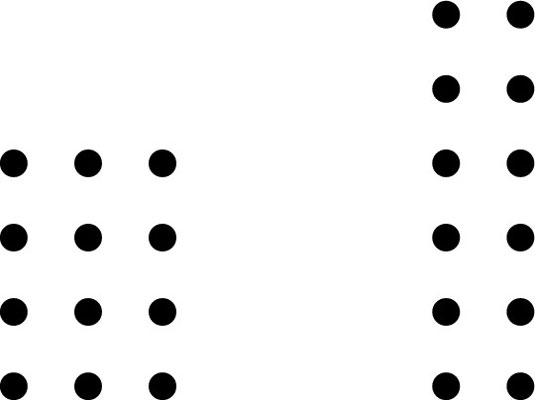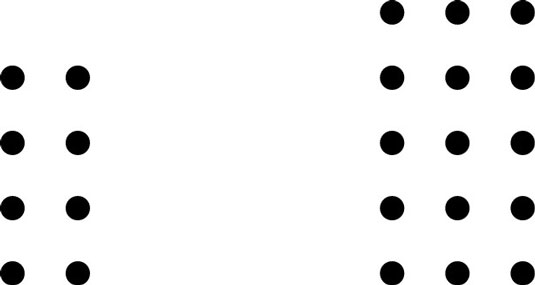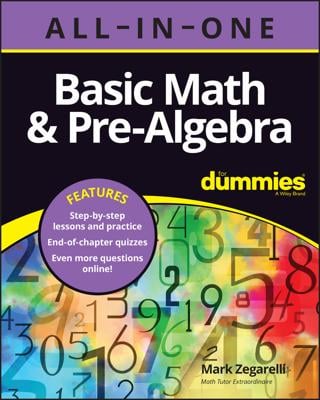Basic Math & Pre-Algebra All-in-One For Dummies (+ Chapter Quizzes Online)
Explore Book Buy On Amazon
Arranging numbers in visual patterns like this tells you something about how multiplication works. In this case, by counting the sides of both rectangles, you find out the following:
3 4 = 12
2 6 = 12
Similarly, other numbers such as 8 and 15 can also be arranged in rectangles, as shown here.

As you can see, both of these numbers are quite happy being placed in boxes with at least two rows and two columns. And these visual patterns show this:
2 4 = 8
3 5 = 15
The word composite means that these numbers are composed of smaller numbers. For example, the number 15 is composed of 3 and 5 — that is, when you multiply these two smaller numbers, you get 15. Here are all the composite numbers between 1 and 16:
4 6 8 9 10 12 14 15 16
Notice that all the square numbers also count as composite numbers because you can arrange them in boxes with at least two rows and two columns. Additionally, lots of other non-square numbers are also composite numbers.

